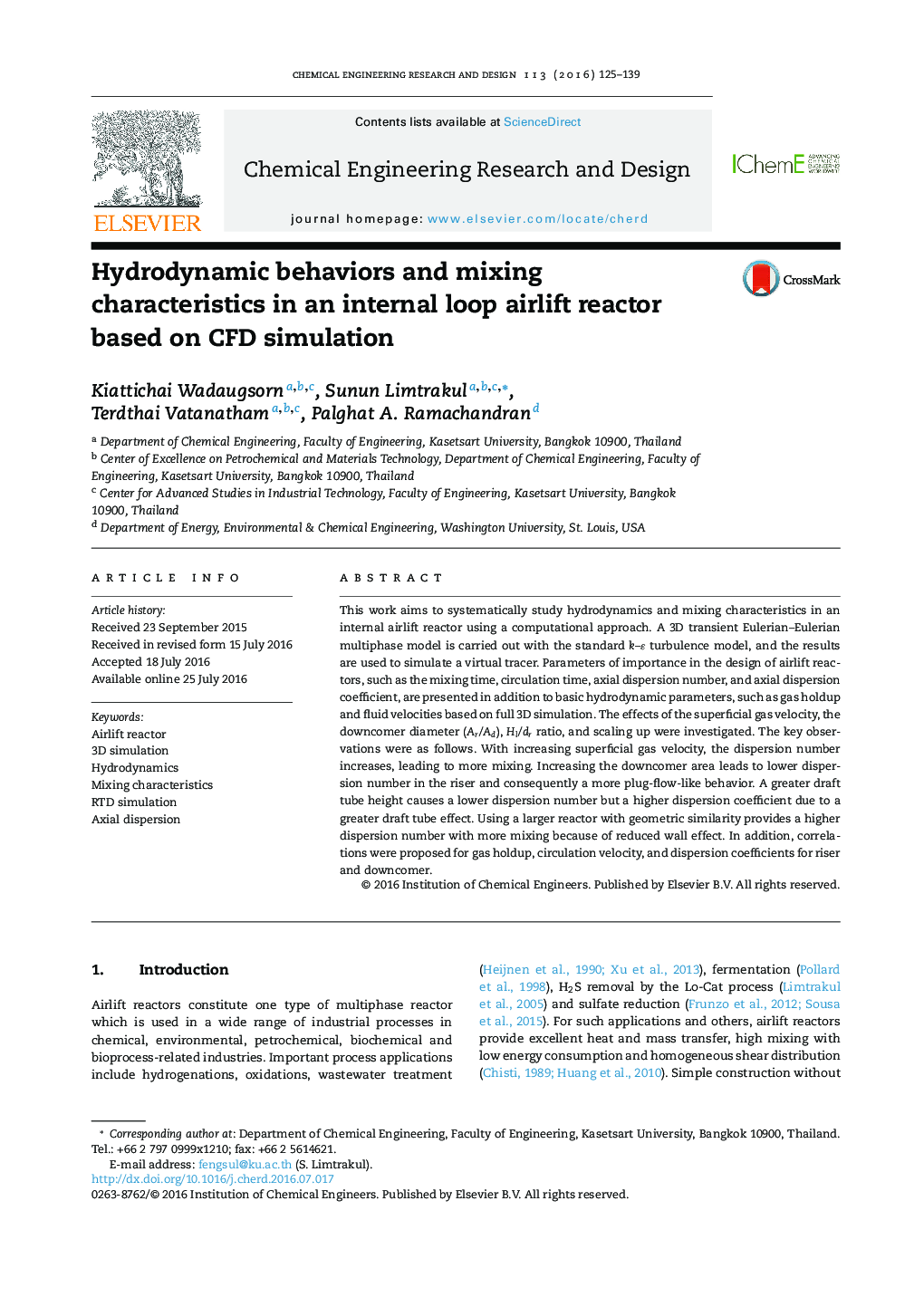| Article ID | Journal | Published Year | Pages | File Type |
|---|---|---|---|---|
| 620321 | Chemical Engineering Research and Design | 2016 | 15 Pages |
Abstract
This work aims to systematically study hydrodynamics and mixing characteristics in an internal airlift reactor using a computational approach. A 3D transient Eulerian-Eulerian multiphase model is carried out with the standard k-É turbulence model, and the results are used to simulate a virtual tracer. Parameters of importance in the design of airlift reactors, such as the mixing time, circulation time, axial dispersion number, and axial dispersion coefficient, are presented in addition to basic hydrodynamic parameters, such as gas holdup and fluid velocities based on full 3D simulation. The effects of the superficial gas velocity, the downcomer diameter (Ar/Ad), Hl/dr ratio, and scaling up were investigated. The key observations were as follows. With increasing superficial gas velocity, the dispersion number increases, leading to more mixing. Increasing the downcomer area leads to lower dispersion number in the riser and consequently a more plug-flow-like behavior. A greater draft tube height causes a lower dispersion number but a higher dispersion coefficient due to a greater draft tube effect. Using a larger reactor with geometric similarity provides a higher dispersion number with more mixing because of reduced wall effect. In addition, correlations were proposed for gas holdup, circulation velocity, and dispersion coefficients for riser and downcomer.
Related Topics
Physical Sciences and Engineering
Chemical Engineering
Filtration and Separation
Authors
Kiattichai Wadaugsorn, Sunun Limtrakul, Terdthai Vatanatham, Palghat A. Ramachandran,
